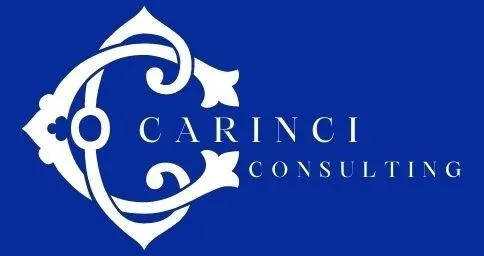
How to Build a Winning Grants Calendar: A Nonprofit’s Year-Round Guide to Success
"A goal without a plan is just a wish.” - Antoine de Saint-Exupéry
Picture this: it’s mid-February, a big grant deadline is looming, and your team is scrambling to pull everything together. Sound familiar? For many nonprofits, grant writing feels like a series of sprints, racing from one deadline to the next. But what if you could transform the chaos into a steady, manageable process that keeps your funding pipeline full all year long?
Enter the Grants Calendar—your secret weapon for strategic, consistent grant submissions. This isn’t just about staying organized; it’s about aligning your funding efforts with your nonprofit’s priorities and goals. Ready to map out a year of success? Let’s dive in.
Start with Your Big Picture Goals 📋
Before you can create a grants calendar, you need to define what success looks like. Ask yourself:
How much funding do we need to raise this year?
What are our programmatic priorities, and how do they align with funding opportunities?
Are there specific funders we want to target?
Example: If your nonprofit aims to expand a youth mentoring program, your calendar might focus on funders with a history of supporting education, youth services, or equity initiatives.
Actionable Tip: Set clear, measurable goals for your grant strategy, such as securing funding for three new initiatives or increasing overall grant revenue by 25%.
Research Funding Opportunities Early🔍
The heart of your grants calendar is a well-researched list of opportunities. Look for federal, foundation, and corporate grants that align with your goals and make note of their deadlines.
Where to Look Examples:
Grants.gov – A comprehensive database for federal grant opportunities across all sectors.
Candid’s Foundation Directory – A robust resource for private foundation funding tailored to nonprofits.
Instrumentl – A powerful grant discovery and tracking tool that matches opportunities to your specific needs.
GrantStation – Offers a searchable database of grantmakers and funding opportunities, plus grant writing resources.
Foundation Center by Candid – Provides insights into foundation giving trends and grant opportunities.
Charity Navigator – Includes information about funders alongside nonprofit ratings.
Community Foundations Locator – Use this tool to find local community foundations with grant opportunities in your area.
Philanthropy News Digest (PND) – Features a regularly updated list of RFPs from a variety of funders.
SPIN (Sponsored Programs Information Network) – A detailed grant database for higher education and research institutions.
Grant Forward – Provides grant opportunities tailored to nonprofits, researchers, and higher education professionals.
The Grantsmanship Center – Offers state-by-state funding databases and training resources.
Google for Nonprofits – Find grants and in-kind advertising opportunities for nonprofits.
GuideStar by Candid – Discover funders by searching profiles of nonprofits and their funders.
Example: A grant proposal that didn’t get funded could reveal gaps in your data or storytelling—and now you’re better equipped for the next submission.
Actionable Tip: Track not only deadlines but also funder timelines for RFP releases, required LOIs (Letters of Intent), and decision announcements. Knowing when funders make decisions can help you plan follow-up and future submissions.
Build Your Calendar in Phases 📆
Rather than tackling everything at once, divide your grants calendar into phases:
Quarter 1: Research and target opportunities, complete early LOIs.
Quarter 2: Focus on spring deadlines and begin preparing summer submissions.
Quarter 3: Submit fall proposals and start prepping for year-end opportunities.
Quarter 4: Wrap up remaining submissions, conduct year-end evaluations, and plan for the next year.
Example: If a major foundation releases its RFP every June, block out time in May for team planning sessions and proposal drafts.
Actionable Tip: Use tools like Google Calendar, Asana, or Trello to map out deadlines and assign responsibilities to your team.
Prioritize and Space Out Submissions ⏳
Not all grants are created equal. Focus your efforts on opportunities with the greatest likelihood of success and ROI. Overloading your team with too many deadlines in one quarter can lead to burnout—and rushed proposals.
Example: If a foundation grant aligns perfectly with your program goals but a smaller grant has a tight turnaround, prioritize the bigger opportunity and plan ahead for the smaller one.
Actionable Tip: Use a scoring system to rank grants by alignment, potential funding amount, and level of effort required. Focus first on high-impact opportunities.
Include Time for Collaboration and Review✍️
A well-crafted proposal isn’t written overnight. Build in time for collaboration, feedback, and revisions in your calendar. Engage program staff, grant writers, and stakeholders early in the process.
Example: If your deadline is March 15, schedule internal reviews for mid-February and external feedback by March 1.
Actionable Tip: Leave a buffer for unexpected delays, like needing additional data or letters of support.
Monitor and Evaluate Progress🔄
Your grants calendar isn’t just a static document; it’s a living tool. Regularly review it to ensure you’re on track and adjust as needed.
Example: If you find that a certain type of grant is consistently yielding better results, pivot your strategy to prioritize similar opportunities.
Actionable Tip: At the end of each quarter, hold a team debrief to discuss what’s working, what isn’t, and how to improve.
Use Your Calendar for Relationship Building 🤝
A grants calendar isn’t just about deadlines—it’s also a tool for cultivating relationships with funders. Schedule check-ins, follow-ups, and thank-yous throughout the year.
Example: If a foundation funds your proposal in April, plan to send an impact report in October and a holiday greeting in December.
Actionable Tip: Build reminders into your calendar for these touchpoints to strengthen funder relationships and set the stage for future funding.
Celebrate Success and Plan for the Next Year 🎉🗂️
As you wrap up the year, take time to reflect on your wins and lessons learned. Acknowledge your team’s hard work and use those insights to refine your calendar for the next year.
Example: If you hit 80% of your funding goals, identify the strategies that worked best and double down on them for 2026.
Actionable Tip: Include time for celebration in your calendar—it’s just as important as the deadlines!
Your Roadmap to Grant Success
A well-structured grants calendar isn’t just a planning tool—it’s your roadmap to consistent funding and greater impact. By aligning your goals with funder priorities, spacing out deadlines, and building in time for collaboration, you’ll transform the grant process from chaotic to strategic.
Ready to start building your winning calendar for 2025?
At Carinci Consulting, we specialize in helping nonprofits create custom funding strategies that align with their missions and maximize results. Let’s work together to make this your most successful grant year yet.
🗓️ Schedule a complimentary strategy session.
Have questions? 📨 Email us at jennifer@carinciconsulting.com.
Office: Lexington, SC
Site: www.carinciconsulting.com

Call: 302-383-4724
Email: jennifer@carinciconsulting.com


